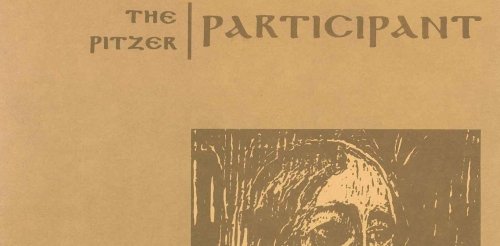Participant at 51
1972 was a milestone year for Pitzer’s magazine. Its former editor explains why.

When Pat Nixon appeared on the cover of Life in 1972 and Lauren Hutton on the cover of Vogue, the cover of Pitzer’s Participant magazine also featured a female subject — the painting “The Emerging Woman.”
That painting was linked to a lengthy cover piece by sociologist Dvid Riesman, a guest speaker, on the unique challenges facing educated young people, especially women. But the cover also signaled something else: a dramatic transformation. With the appearance of that issue in the fall of 1972, Participant expanded to a full magazine format of 30 pages. That was a significant change considering that, for five years, Participant had been smaller and simpler — an eight-page, pamphlet-style publication that replaced an earlier publication, the four-page newsletter Sound Off!

For Lee Jackman, who served as the College’s vice president of development and communications at the time, the eight-page Participant had outlasted its purpose.
“The magazine really needed an upgrade,” said Jackman, who also served as the magazine’s editor and led the redesign. “It was too small, too basic, and we wanted something more sophisticated for Pitzer. The College was growing and we wanted a better way to present it. We had no shortage of material.”
The magazine’s expansion to 30 pages resulted in more room for Pitzer’s faculty to stretch their scholarly wings and showcase the intellectual breadth of the College.
As Participant returns to print with the current issue after a hiatus starting in early 2020, Jackman — who lives in nearby Mt. San Antonio Gardens — said she’s proud of the changes that she and her team executed more than 50 years ago. Every issue of Participant is like a time capsule, she said: It contributes something important to Pitzer’s history.
Not only does the magazine capture a snapshot of life at Pitzer during a particular moment in time, Jackman explained, for future students and for the person who someday writes the College’s history, the magazine also provides “a road map that shows you where we’ve been and how far we’ve come.”